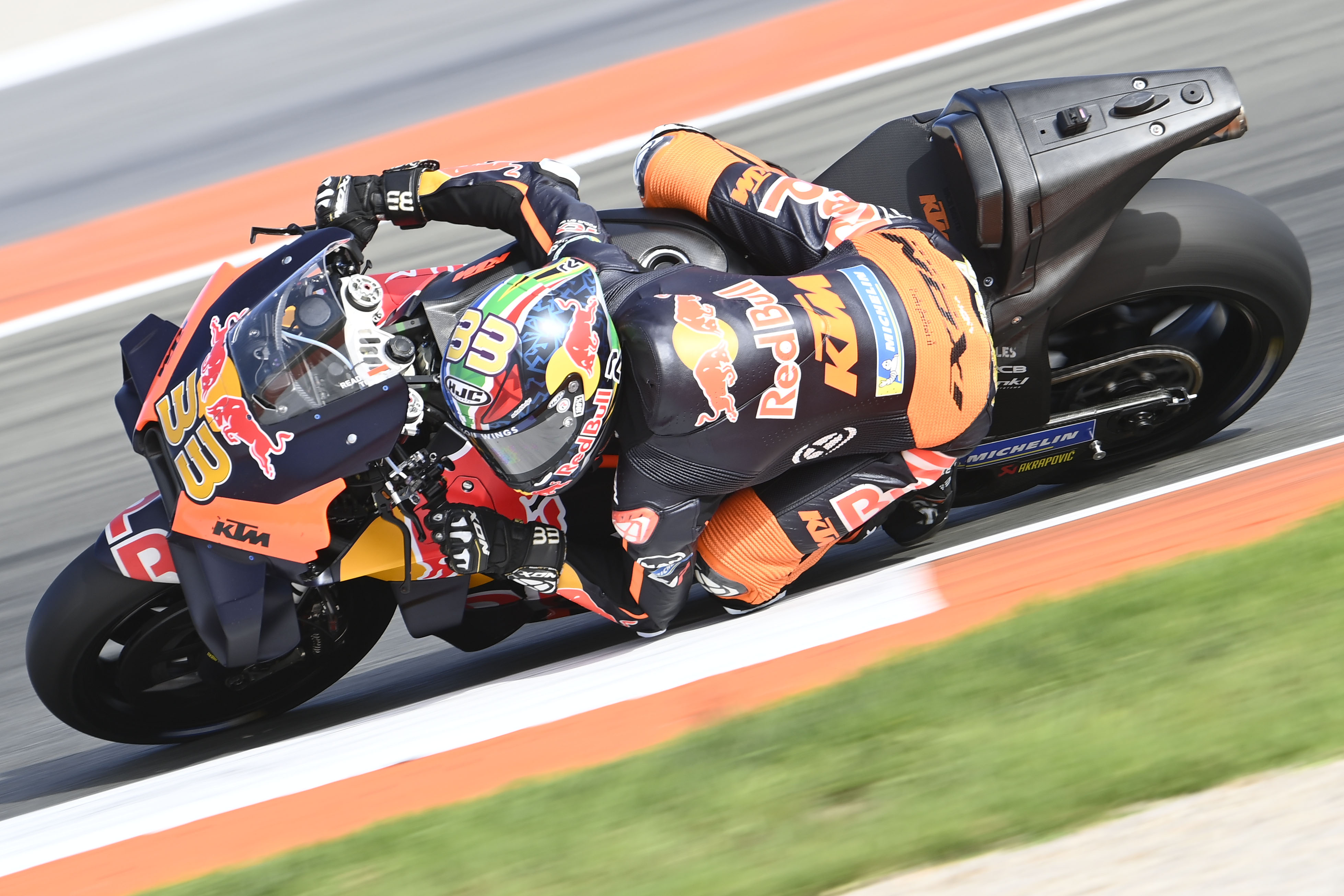The opening day of full-grid MotoGP 2024 pre-season testing at Sepang served up perhaps the defining image so far of the series' aero revolution - and it wasn't to do with any of the actual designs.
The three-day shakedown at the same track that had preceded the test had already showcased many of the latest aero developments - whether they be revised front wing profiles hidden away by camo liveries to prevent rivals from getting a good gauge on the dimensions, increasingly intricate side structures or extensive modifications to the seat unit.
All of these, though, have largely been iterations on ongoing MotoGP design trends, more globally meaningful as a mass than as individual components.
But it was the sight of a 2024 Aprilia RS-GP taken through the corner at considerable lean angle by Miguel Oliveira with an array of pitot tubes attached at the seat that was really striking.
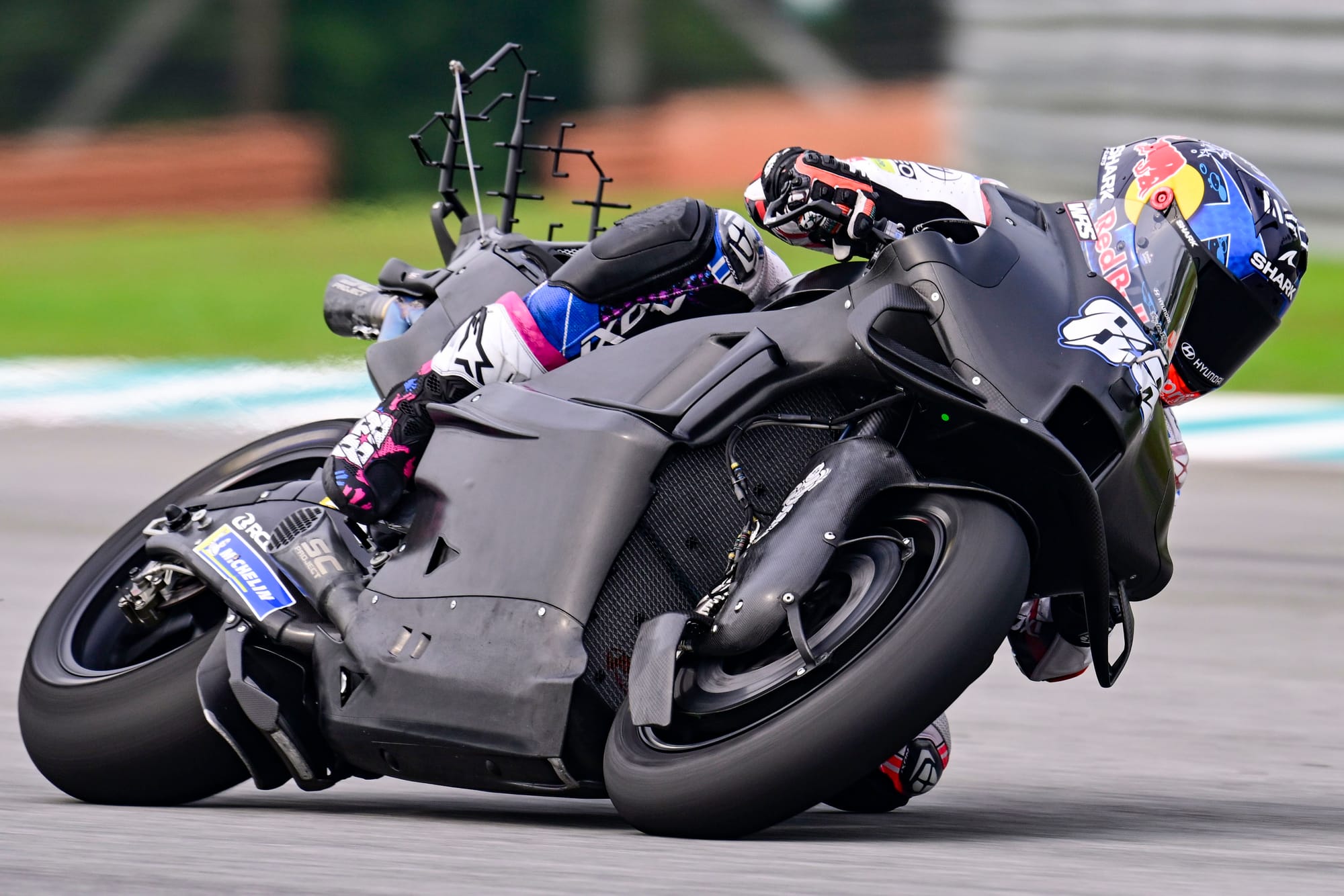
No, it is not some sort of new clandestine technology - and if you happen to tune in to pre-season testing for MotoGP's four-wheeled counterpart Formula 1, it will take you virtually no time to see a car carrying the kind of 'aero rake' pitot tube array that makes what Oliveira ran today seem positively quaint.
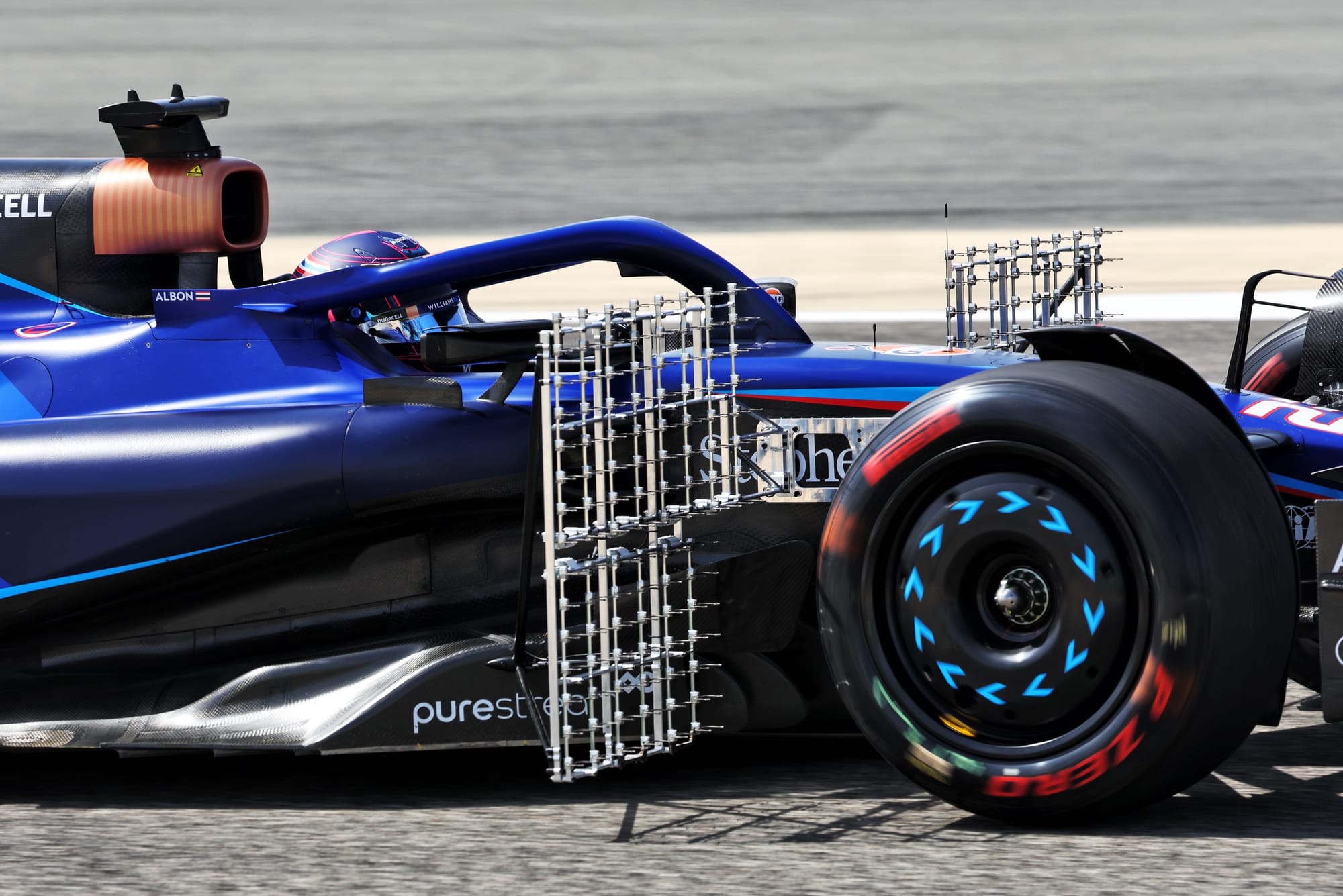
But what is an incredibly normal sight on an F1 car now feels so truly alien on a MotoGP bike - and while there's certainly a limitation to how many aero sensors can be fitted on a bike given its relative dimensional movements compared to the planted F1 car, clearly Aprilia has seen a benefit.
And, on the one hand, the team deserved to be lauded. It is not surprising that Aprilia has felt compelled to run an aero rake on its bike because, alongside Ducati, it's been firmly at the front of everything aero in MotoGP in recent years, and its commitment to technological innovation has paid off big-time on track, helping turn it from something of a MotoGP laughing stock to a bold and brave racing operation with a desirable product for prospective riders.
On the other hand... well, look at it.
Look at that absolute monstrosity.
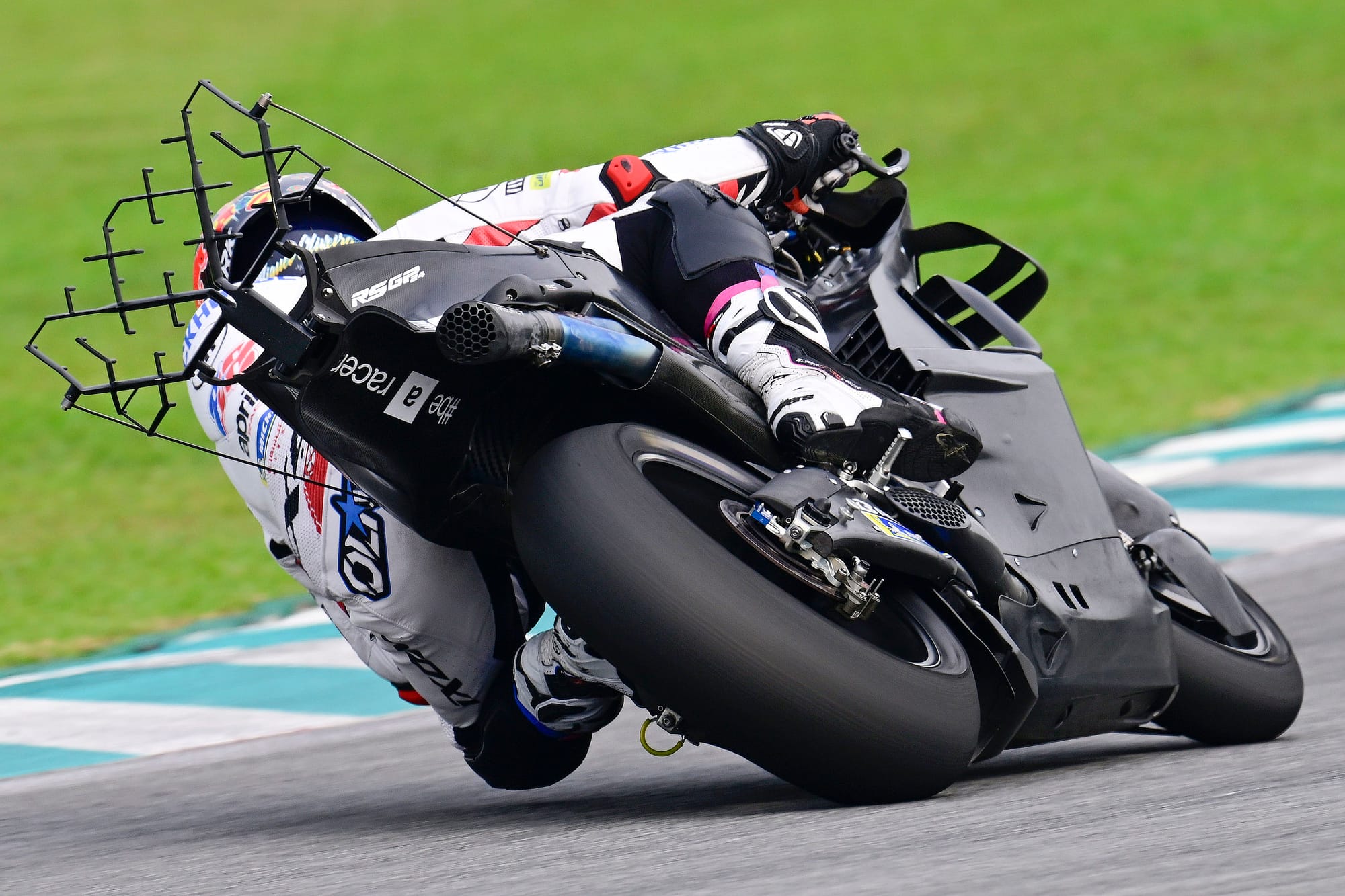
It's also a keen reminder of how the rear of a MotoGP bike has become a particularly obvious and visual developmental battleground as of late, and that it’s the battleground least governed by MotoGP's technical regulations.
MotoGP does have aero body rules and a limited number of available upgrade homologations per season - the European factories can introduce two aero specs in a year, while Honda and Yamaha, under concession 'rank D' status (partly designed to help them catch up in aero development, where they've been badly left behind), can introduce three (although they have to discard one of the previous versions if they introduce a third one).
But the seat unit is in the aero 'shadow' of the rider so isn't covered. Which means factories have been able to go absolutely all out here through the season - and they have, from the increasingly-prominent stegosaurus wings and the now-seemingly-out-of-favour T-wings, to KTM's 'box' wing, to Aprilia's new reshaped seat unit concept.
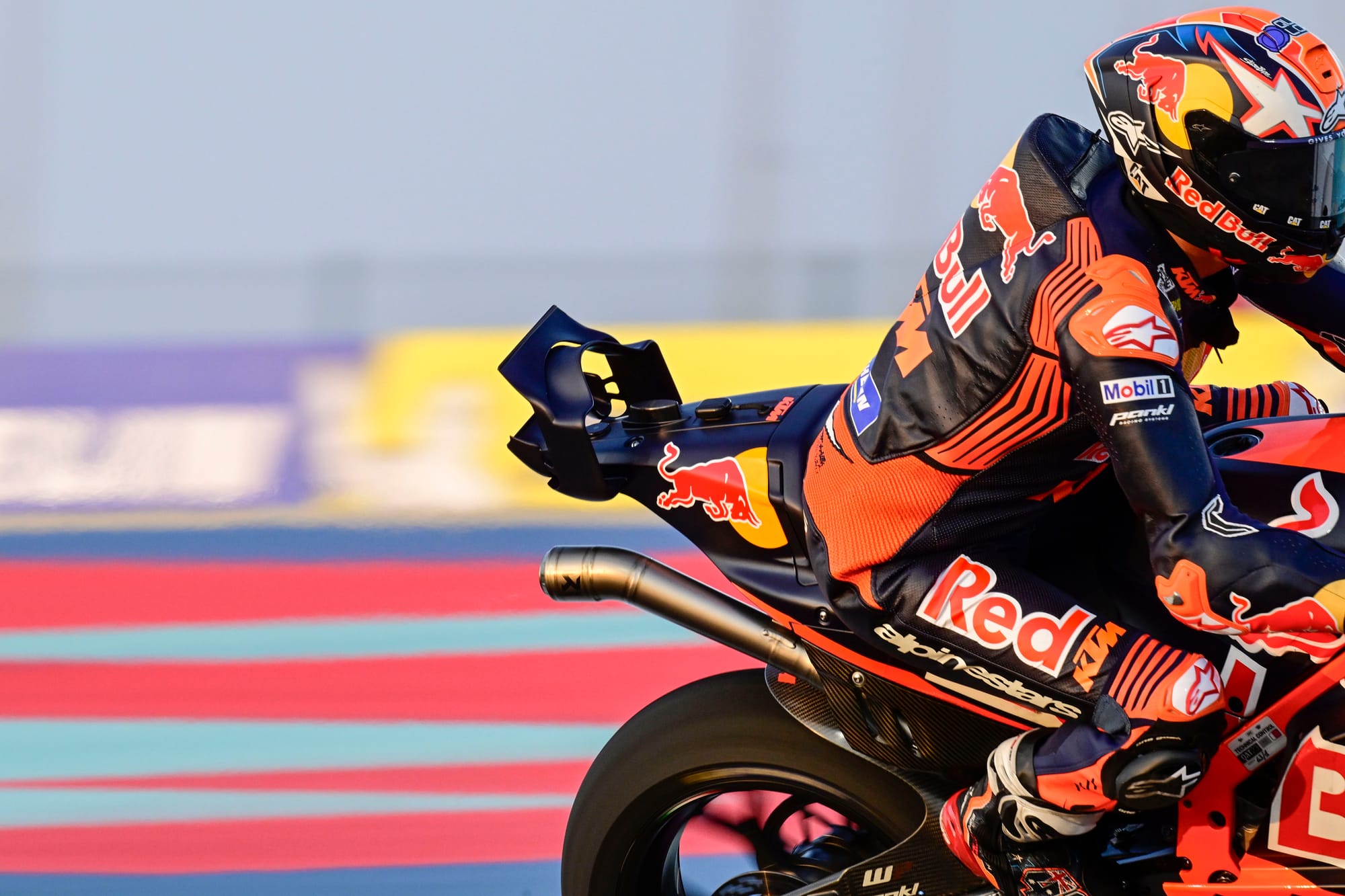
The regulation as it stands is kind of like a building with a security outpost at the front door - but the back wall is missing.
"I've seen some photos from the shakedown, some new aerodynamics... looks like Formula 1," said Marc Marquez on Monday.
"For me... I hate that way, but it's the way it's going, if the rules allow them, they [the factories] will go there.
"But when I see that every time we are going more and more on the aerodynamics... personally speaking, I don't like it. But OK, we need to adapt."
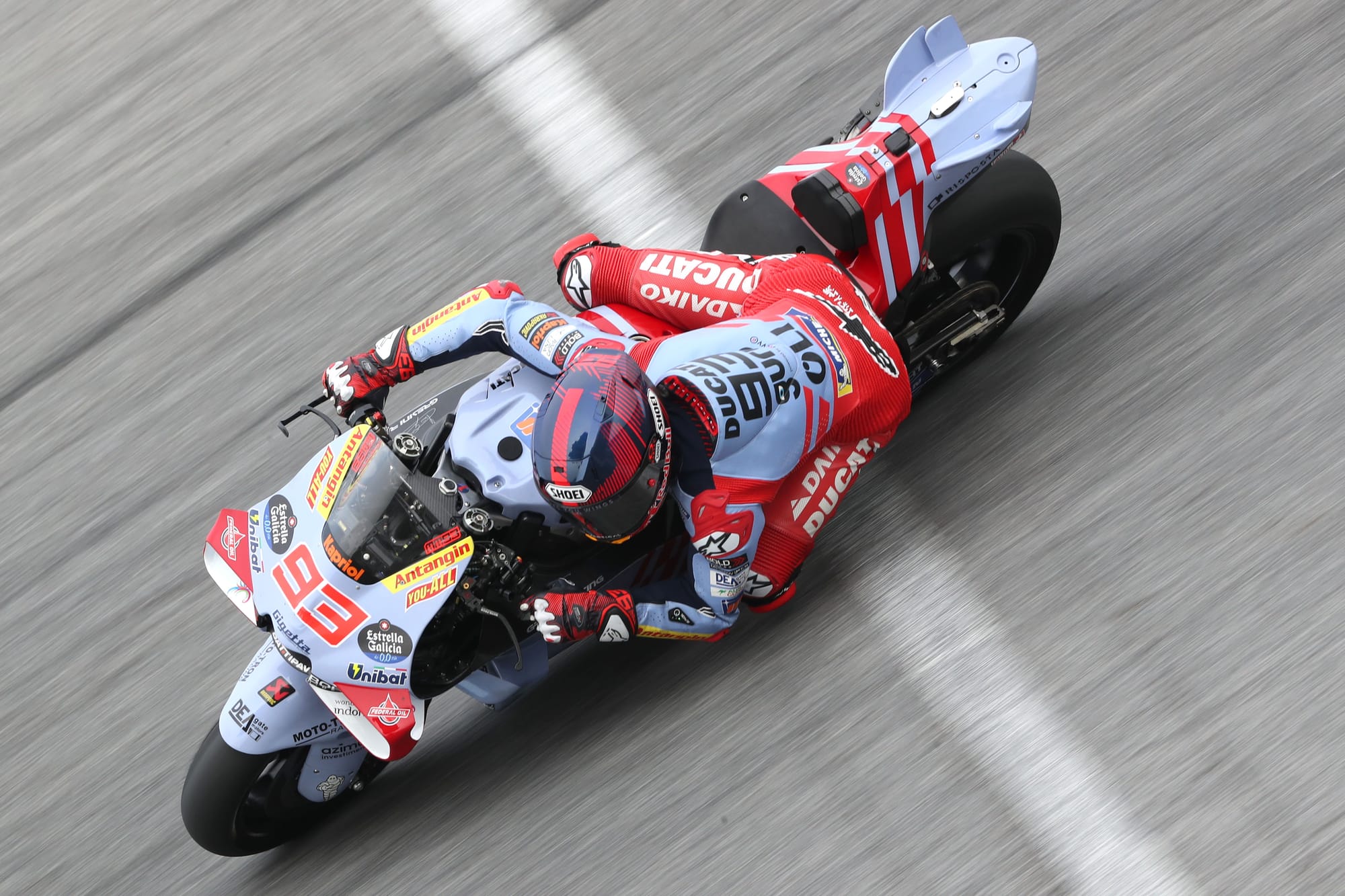
MotoGP's next regulations cycle change is only coming in 2027. A significant curbing of the aero freedoms is expected then - but that's another three seasons away.
In the meantime, there are long-standing concerns over what the aero appendages are doing to the quality of racing through airflow disruptions, whether they have contributed to untenable cornering speeds and to unmanageable tyre pressures.
And, perhaps instead of learning from the four-wheeled world, MotoGP is watching its factories one by one line up to exploit that same four-wheeled expertise that has dramatically impacted the quality of racing in F1 and its peers, with this week’s revelation that Yamaha is now working with Dallara following last year’s news of a KTM/Red Bull F1 tie-up.
Maybe it'll all mean a massive course correction in 2027 - the more advanced aero gets now, the stronger you'd expect the reaction to be.
But there's another three years to go, lots of other areas of focus for 2027 and lots of conflicting interests to manage. MotoGP's aero question is as pressing as ever - and an answer cannot be taken for granted.



